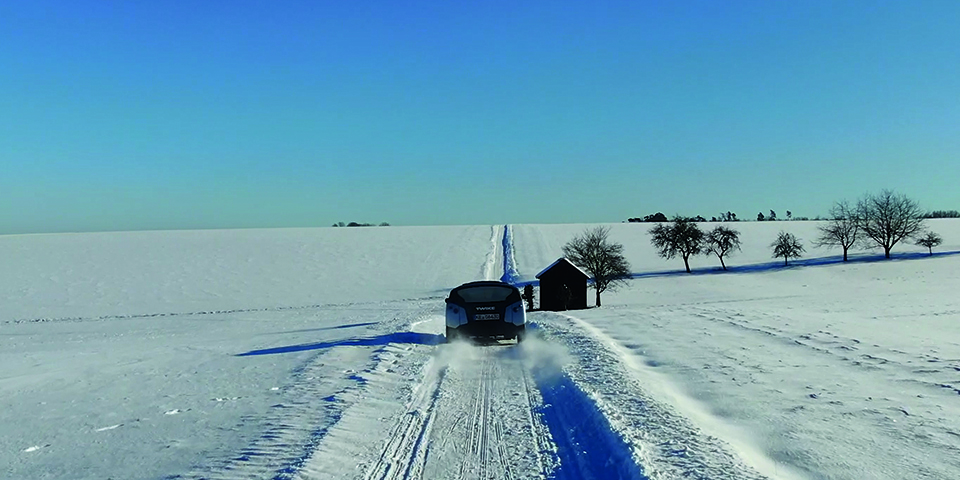Please note: Our texts are translated automatically. Errors may occur during this process.
Those who speculated on a mild one and wanted to save themselves the change to winter tires could easily find themselves skidding in the past few days. So the question is obvious: How suitable is the TWIKE 5 for winter and thus for everyday use?
The answer is clear: very suitable for winter! The TWIKE is not a fair-weather motorhome for going for a ride, but is generally designed to be used all year round. By the way, the TWIKE 3, which is also ridden by many pilots in the winter months, already meets this requirement.
Three aspects are at the forefront of consideration: safety, comfort and corrosion protection. As with the TWIKE 3, the 5 Series comes with extensive corrosion protection, so you can quickly check this box.
When it comes to comfort, the focus is on heating and ventilation – with ventilation also including safety aspects. For this reason, the TWIKE 3 was also equipped as standard with powerful windshield heaters to keep the windshield free of ice and fog. Up to now, however, body heat has had to be provided by appropriate clothing or a spirited pedal stroke. That will be different with the TWIKE 5.
Due to the high efficiency, the motor and the associated drive inverter do not produce sufficient waste heat to heat the interior permanently. In addition to the handle heater and the resistance heater integrated in the windshield, the interior heater consists of an optional seat heater and a 1.8 kW airflow heater. The latter also flows out via adjustable side vents against the windshield and into the footwell. The heating can be set on the main display so that it brings the passenger compartment to a desired temperature at the planned departure time while still being supplied by the mains, without using battery power to reduce range.
Right of way for e-efficiency
Despite the increased comfort, we remain true to one thing: efficiency is always at the forefront of our considerations. Therefore, to save energy, the heaters are located where the heat is required. Thus, the use of the heating system only reduces the range as little as possible.
Heating of the TWIKE 5 battery at low outside temperatures is provided. Special cooling is not required due to the conservative design.
The TWIKE 3 had an advantage on one point in winter: The very narrow tires, which result in high contact pressure due to the low road contact, provide extremely good grip on snowy or icy roads. The TWIKE 5 no longer allows these motorcycle tires at speeds above 100 km/h and the possible lateral accelerations. That’s why we are now focusing on passenger car tires that are as narrow as possible, have low rolling resistance, and can also be expected to be available for a long time – we are adopting the optimized tires for the BMW i3.
The pictures taken last winter impressively show how well the TWIKE 4 can already be used in the snow.
